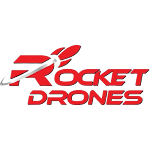As education continues to change, it’s becoming more important to bring technology into classrooms. One exciting and effective way to do this is by using a drone STEM curriculum. This approach not only grabs students’ attention but also helps them develop essential skills for today’s world. By using drones in lessons about science, technology, engineering, and math (STEM), schools can give students hands-on experiences that make learning more enjoyable and inspiring. Drones allow students to explore complicated ideas in a fun and interactive way. This helps them understand complex concepts and makes learning more enjoyable. Also, working with drones boosts problem-solving and critical-thinking skills. In this article, you will realize how a drone-based STEM curriculum can transform educational experiences and outcomes, preparing students for future technological challenges.
Engaging Students with Hands-On Learning
Introducing drone STEM kits into school lessons is a significant change from traditional teaching methods, moving towards more interactive, hands-on learning. These kits let students build, customize, and fly drones, helping them learn essential skills like problem-solving and engineering. By getting involved in creating and controlling drones, students better understand the ideas they read about in books, making the connection between what they learn and how it works in real life.
Enhancing Collaborative Skills
This curriculum naturally encourages students to work together. They team up to use drone technology, which helps them improve their communication and teamwork skills. Working together makes learning more fun and also prepares them for real-life situations they’ll face in their future jobs. By teaming up to solve problems and reach shared goals, students learn how important it is to work well with others and think in different ways to solve tough challenges.
Integrating Technology with Creativity
Creativity plays a significant role in education using drones. Drone STEM lessons encourage students to think creatively as they plan flight paths and missions for their drones. This mix of technology and creativity helps students develop new ways of thinking. Instead of just using technology, students get to create with it, coming up with ideas like drone racing for schools or projects to monitor the environment. This creative work helps students become leaders in science and technology, teaching them the value of teamwork and different ideas when solving challenging problems.
Preparing for the Future
The skills students learn from a drone curriculum are very useful for future jobs, which will depend more and more on technology. Students get an early start in understanding complex systems and technologies that will be important in careers like
● robotics,
● aerospace,
● and computer science.
By using this curriculum, schools can give students the tools they need to succeed in a world that is becoming more focused on technology.
Summary
Incorporating a drone curriculum into education provides students with valuable skills that are essential for the future. By combining hands-on learning with creativity and teamwork, students are better prepared for careers in technology-driven fields. This innovative approach not only enhances academic performance but also equips students with the problem-solving abilities necessary to use in a tech-driven environment. If you are also looking for expert training providers, then you can trust firms such as Rocket Drones. The drones they offer are user-friendly and straightforward to operate. Also, their experts provide in-depth lessons on every subject using the latest, most advanced features.



